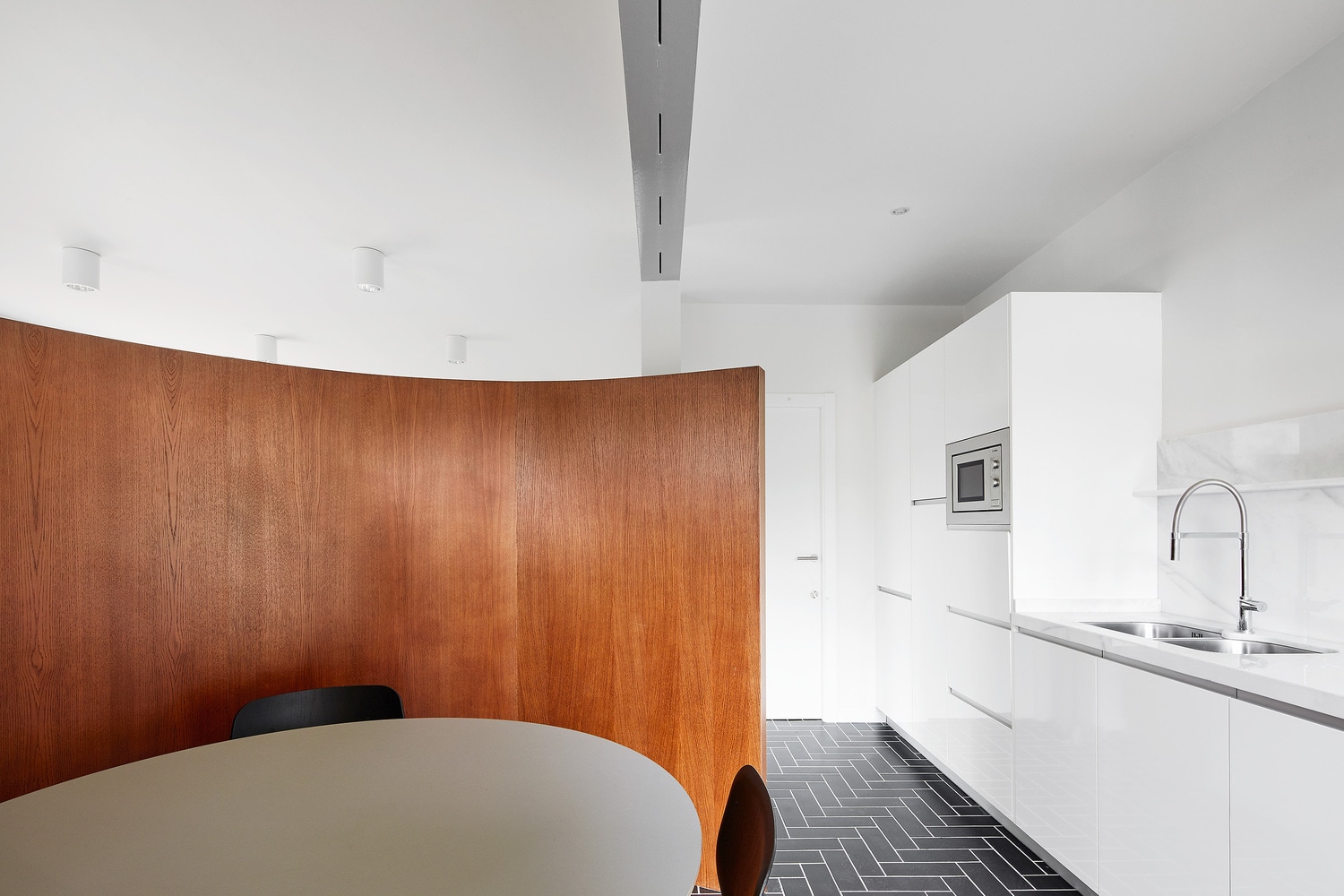House 1016 is a minimalist residence located in Barcelona, Spain, designed by Raúl Sánchez. The proposal is for a small budget intervention in which demolition is minimized to make the most of existing features, aimed at combining a second home with seasonal rentals. However, the home’s current floor plan is outdated and does not meet the new functional requirements and needs. With a few changes, the idea is to change the way the house is lived in. On the ground floor, the kitchen is small and has little relation to the other spaces; although the new kitchen project maintains its current location to take advantage of the existing plumbing and drain systems, it now opens up to the living room through an opening in the wall that separates these two spaces, which is a load-bearing wall and thus requires reinforcing.
Under this reinforcement, a new curved partition is added between the living room and the kitchen, creating a dining area. But this partition does not reach the ceiling as it is only 180 cm tall, and its purpose is to create a distinct area but without splitting the space, adding interior circulation complexity and spatial richness. The rest of the interior interventions on the ground floor are focused on creating a space continuum without physical separation but using specific elements to define the different areas based on their function.
On the first floor, again with the aim of preserving most elements and minimizing demolition, the five-bedroom layout is kept, but the features of the central bedroom are completely changed: its opaque doorway becomes transparent, with the possibility of opening this room completely to the hallway through two large sliding doors. This way, this room’s function becomes flexible, as it can be separated from the rest as a bedroom (by means of an opaque curtain), as a game or reading room, or as the extension of the hallway into the outdoor terrace. Concealed built-in closets hide folding beds and storage surfaces, enabling different uses for these rooms. Replacing the floors, as well as the new wall lining, helps reinforce this new strategy. For the ground floor, a new black ceramic floor in a herringbone pattern unifying all areas and seen again in the common areas on the first floor is selected.
Photography by José Hevia
